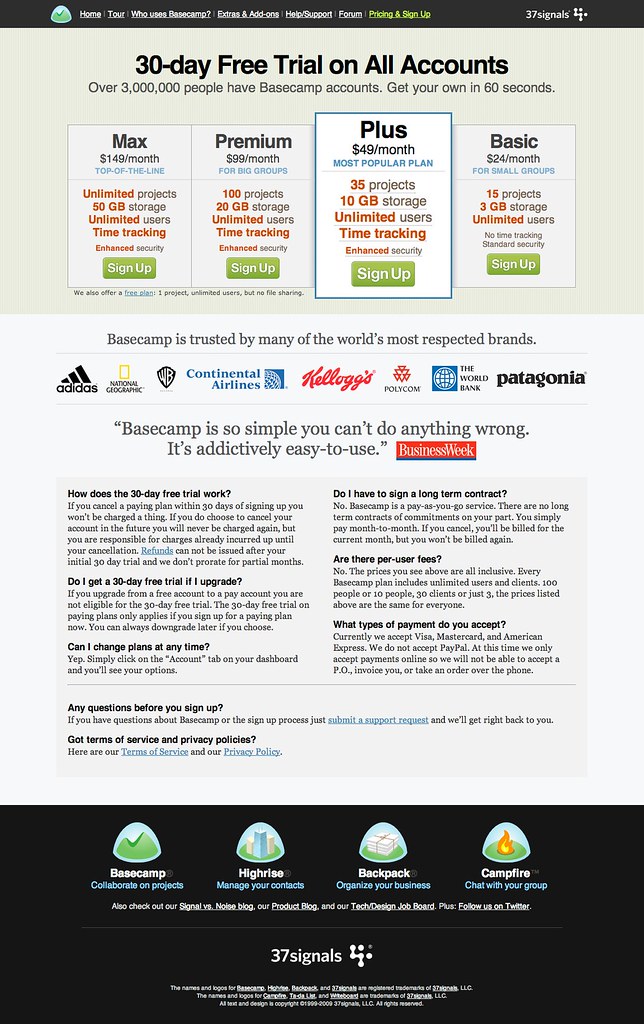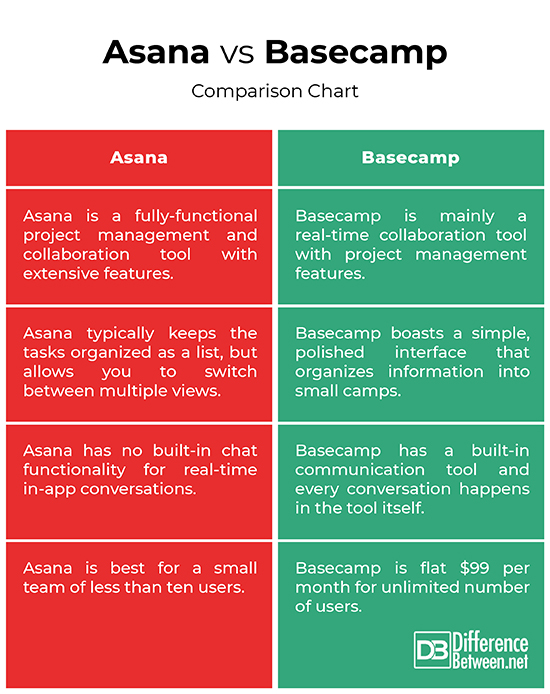Difference Between Asana and Basecamp
Organizations have been working on the idea of remote working for long, but it’s only since the COVID-19 pandemic started wreaking havoc on the world’s population, they have actually started implementing the idea of working from home. Well, as it seems, it’s not a bad idea after all as technology made working remotely an obvious possibility and it’s actually working. The great thing about technology and even working remotely is that it’s all working just fine and it’s not exactly rocket science either. And thanks to the distributed workforce, we are transitioning from synchronous to asynchronous collaboration. The modern-day productivity tools make remote working and collaboration easy for modern organizations that are willing to adapt to the new ecosystem. Asana and Basecamp are two such work management and collaboration tools used by companies worldwide to stay organized.

What is Asana?
Asana is one of the most popular and widely used project management and online collaboration tools that emphasize cooperation among team members in a work environment around project related tasks. Asana follows the software-as-a-service (SaaS) model and aims to remove the unnecessary chatter on email around team tasks. It is a complete work management solution that helps teams track their work and stay organized, visualize their goals and assign priority to their tasks. It places all your project related stuff and conversations related to the project in one place, thereby making you spend less time in your email inbox so you can focus on the things that actually matter. The basic version of the tool is free to use for up to 15 members in a team, which is just enough to collaborate and stay organized. If required, you can shed some extra bucks for the premium plans and add more users.

What is Basecamp?
Like Asana, Basecamp is a powerful online collaboration and project management tool that helps organizations to stay organized and reduce the everyday chaos that sprawling projects and workforce can cause. The key to every organization’s success and credibility lies in its ability to effectively manage its projects. Regardless of the type or size of the project you are managing and the number of people involved – whether directly or indirectly – in the project, you need a solid plan to plan everything, from managing your teams and projects to making sure everybody is on the same page and the end result aligns with your business goals. You can do all that and more with Basecamp. It’s a one-stop task management solution that helps manage both projects and project staff with team members scattered across the globe. Basecamp enables you to track project milestones, create to-do lists, send messages, assign tasks, and write documents – all via its free online service.
Difference between Asana and Basecamp
Tool
– Both Asana and Basecamp are powerful team collaboration tools that offer organizations a great way to move from the conventional email chatter to efficient team management around tasks and projects. However, Asana is a fully-functional task management solution that offers a suite of features to help teams manage their everyday tasks and coordinate with other team members to stay on track at all times. Basecamp, on the other hand, is basically a real-time collaboration tool with project management features to help teams coordinate with everyone involved in the project.
Views
– Asana typically keeps the tasks organized as a list, but it allows you to switch between multiple views options to visualize projects in other ways. If you want to view the tasks that need to be completed next, you can visualize them in a timeline view. If you wish to see an overview of the project, you can view them as a burn up chart. Basecamp has similar offerings, but it has a much simpler design, organizing information into small camps instead of a top-down view of information.
Communication
– One of the best things about Basecamp is that it has a built-in communication tool called Campfire which is basically a Slack-like group chat platform that allows teams to communicate with each other on everything, from project related stuffs to casual conversations. For more permanent conversations, Basecamp offers a message board which is like a central hub of all company-wide discussions and internal debates. So, almost every discussion including social chatter happens inside Basecamp. Asana, on the other hand, has no built-in chat functionality like Basecamp, but it provides third-party apps for team conversations.
Pricing
– Pricing is a major selling point when it comes to choosing the right project management solution. The basic version of Asana is free to use for up to 15 members in a team, which is just enough to collaborate and stay organized. Asana offers a variety of premium plans to cater to the needs of businesses of all sizes, starting from $10.99 per user month for annual commitment and goes up to $24.99 for the Business plan. So, if you’re small team, let’s say a team of four to five people, Asana is the best option. But, if you are a large team of let’s say 10 or more, Basecamp is your best bet because its Business plan is $99 per month flat for unlimited number of users and unlimited projects, saving you a great deal of money.
Asana vs. Basecamp: Comparison Chart

Summary
While both Asana and Basecamp are great project management and online collaboration tools, the built-in chat feature of Basecamp is what makes the real-time collaboration tool really stand out. Campfire is the group chat feature of Basecamp and a communication hub for all casual team conversations and random discussions. While Asana is great for a small team of up to 10 people, Basecamp is a much better option when you have a large team of let’s say 40 people or so. One of the major selling points of Basecamp is that it is $99 flat per month for unlimited users, which saves you a lot of money on the long run.
- Difference Between Caucus and Primary - June 18, 2024
- Difference Between PPO and POS - May 30, 2024
- Difference Between RFID and NFC - May 28, 2024
Search DifferenceBetween.net :
Leave a Response
References :
[0]Fried, Jason and David Heinemeier Hansson. Remote: Office Not Required. New York, United States: Random House, 2013. Print
[1]Rutledge, Patrice-Anne. Sams Teach Yourself Basecamp in 10 Minutes. New Jersey, United States: Pearson Education USA, 2010. Print
[2]Davidson, Jeff. Everyday Project Management. California, United States: Berrett-Koehler Publishers, 2019. Print
[3]Chan, Kennis. Future Communication Technology and Engineering: Proceedings of the 2014 International Conference on Future Communication Technology and Engineering (FCTE 2014), Shenzhen, China, 16-17 November 2014. Florida, United States: CRC Press, 2015. Print
[4]Conlon, Ciara. Productivity for Dummies. New Jersey, United States: John Wiley & Sons, 2016. Print
[5]Image credit: https://live.staticflickr.com/3090/3240164002_20af1f3b46_b.jpg
[6]Image credit: https://commons.wikimedia.org/wiki/File:Asana_logo_new.png
